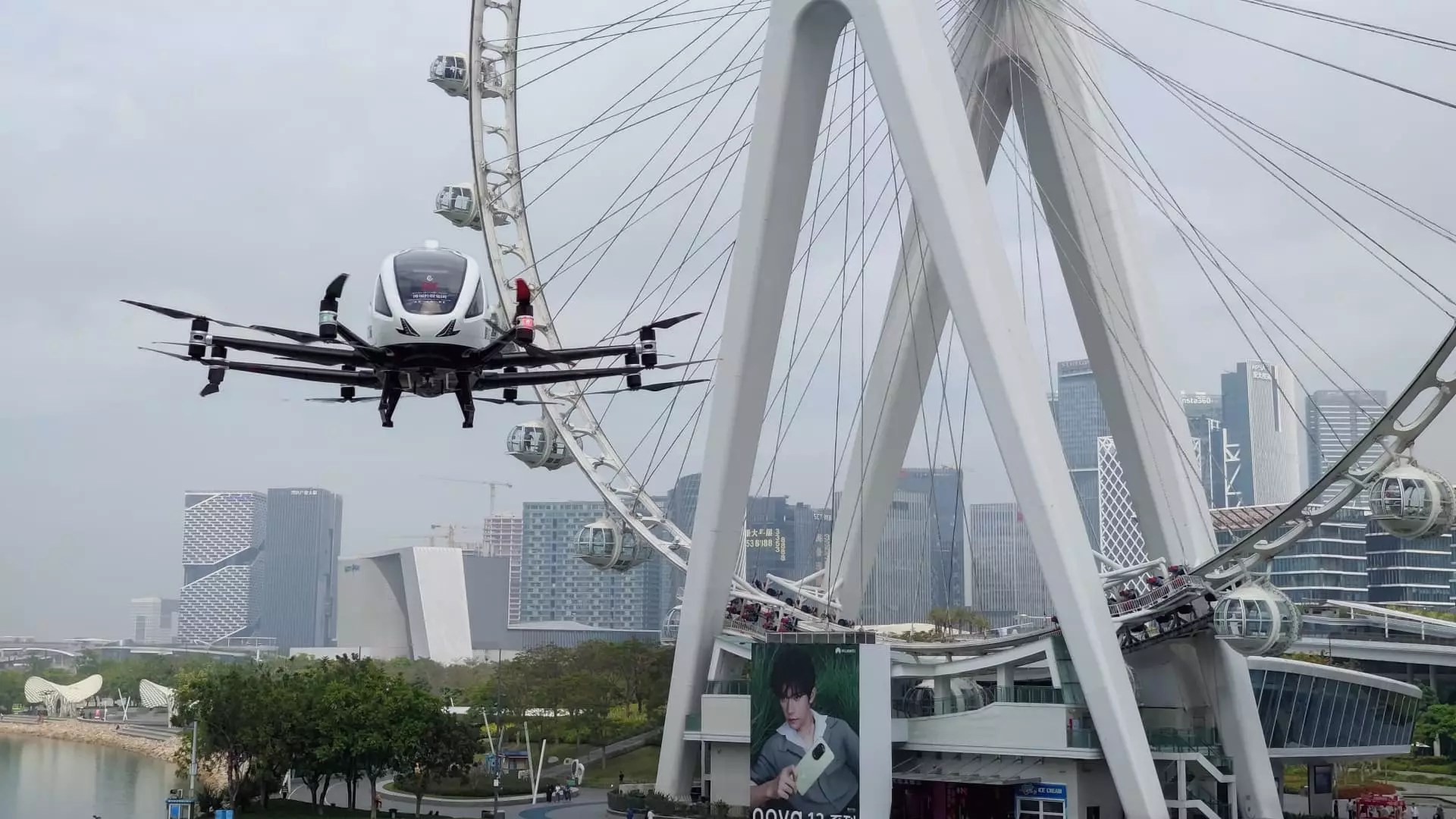In an age when flying cars have long graced our screens in science fiction, one startup has landed a significant milestone in reality: Ehang, a Chinese company that has made waves by receiving operational certification for its eVTOL (Electric Vertical Takeoff and Landing) aircraft. This feat is not just a technical accomplishment; it signifies a seismic shift in how we perceive personal transportation. With the Chinese Civil Aviation Administration lighting the way, Ehang is set to transform how tourists will explore the skies over China. While competitors flounder or lag behind in their certification pursuits, Ehang stands tall, lauded as a trailblazer in a relatively nascent industry.
Ehang’s unique positioning within the restrictive Chinese regulatory landscape ensures it a monopoly of sorts in the near future. According to analysts, the strict airworthiness policies create barriers that deter new players from penetrating the market effectively until at least 2027. This scenario opens the door for Ehang to seize every opportunity and solidify its status as the go-to name for air taxis, especially as tourism resumes and residents seek new ways to experience their surroundings.
Why Government Policy is a Game Changer
The allure of Ehang is not limited to revolutionary engineering alone; the Chinese government’s fervent support for the “low-altitude economy” cannot be overstated. This policy drive surrounds the ambition to develop infrastructure that backs eVTOL operations, pivoting local governments towards major investments. With around 300 local authorities fervently pursuing related initiatives, the groundwork is being laid for a bright future in aerial travel.
While American firms like Joby Aviation and Archer are understandably envious of Ehang’s rapid progress, they’re mired in regulatory delays. The U.S. Federal Aviation Administration remains cautious, focused primarily on the safety of piloted flights before venturing into autonomous air travel. This regulatory hesitance reflects outdated thinking; Ehang is charging forward into a future that prioritizes efficient, transformative transport solutions. For those of us who lean center-right—advocating for innovation and economic progress—this is a poignant reminder of how policy can either nurture or stifle technological advancement.
Market Forecast and Revenue Projections
The financial forecasts surrounding Ehang are tantalizing. Analysts from Bank of America anticipate that Ehang could deliver upwards of 442 units this year, with projections reaching 813 units by next year. Such figures imply staggering revenue growth—102% and 82% for 2025 and 2026, respectively. The potential unit sales number paints an optimistic picture: at least 80,000 units could find homes among China’s premiere tourist attractions as each site could be vying for five to ten eVTOLs.
Ehang’s certified model, priced at around $330,000 in China, is competitive in a market where giants like Joby have models exceeding a million dollars. Lowering the financial barrier for acquisition can provide Ehang with a substantial advantage in gaining traction, particularly as infrastructure investments pour into supporting this fleet of flying taxis. This competitive pricing strategy also seems to lure other players into the playground, even as they struggle to keep pace with Ehang’s rapid ascent.
Risks and Challenges Ahead
However, the road ahead isn’t devoid of pitfalls. While the glimmering prospects of sky-high commerce are enticing, they come with formidable risks. Analysts note that should any mishaps occur—injuries or accidents involving Ehang’s aircraft—it could lead to dire reputational damage, alongside a cascade of legal ramifications. Such incidents could significantly undermine public confidence in this revolutionary form of transport, triggering a backlash that might slow down widespread adoption.
For any advocates of liberal market principles, the apprehension surrounding Ehang’s dependence on government support raises crucial questions about the sustainability of its growth model. If further regulation becomes stringent in the event of accidents, it could initiate a long and arduous path to recovery for a company that should otherwise be soaring. Such is the paradox of progress; with height comes scrutiny.
The Future of Air Mobility
Looking ahead, the urban air taxi market looms on the horizon as another goldmine for eVTOL companies. Although it’s projected that tourism will be the immediate driver of demand, air taxis potentially hold an even larger share of the market by 2035. With estimates suggesting a market for up to 200,000 units, the economic implications for innovators like Ehang are too enticing to ignore. Profitability hinges on proving that eVTOL operations can be lucrative, thus reinforcing the need for aggressive expansion into urban centers.
As Ehang continues to operate in China with an intent towards global markets, the stranglehold these early regulations create needs to be coupled with transparency and responsibility. It’s imperative for both regulators and the company to walk a fine line between enabling progress while ensuring safety. This balance will dictate not just Ehang’s success, but the very future of aerial mobility worldwide. The aircraft may be ready for liftoff, but the questions surrounding its adoption are still firmly grounded.


Leave a Reply